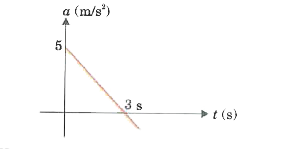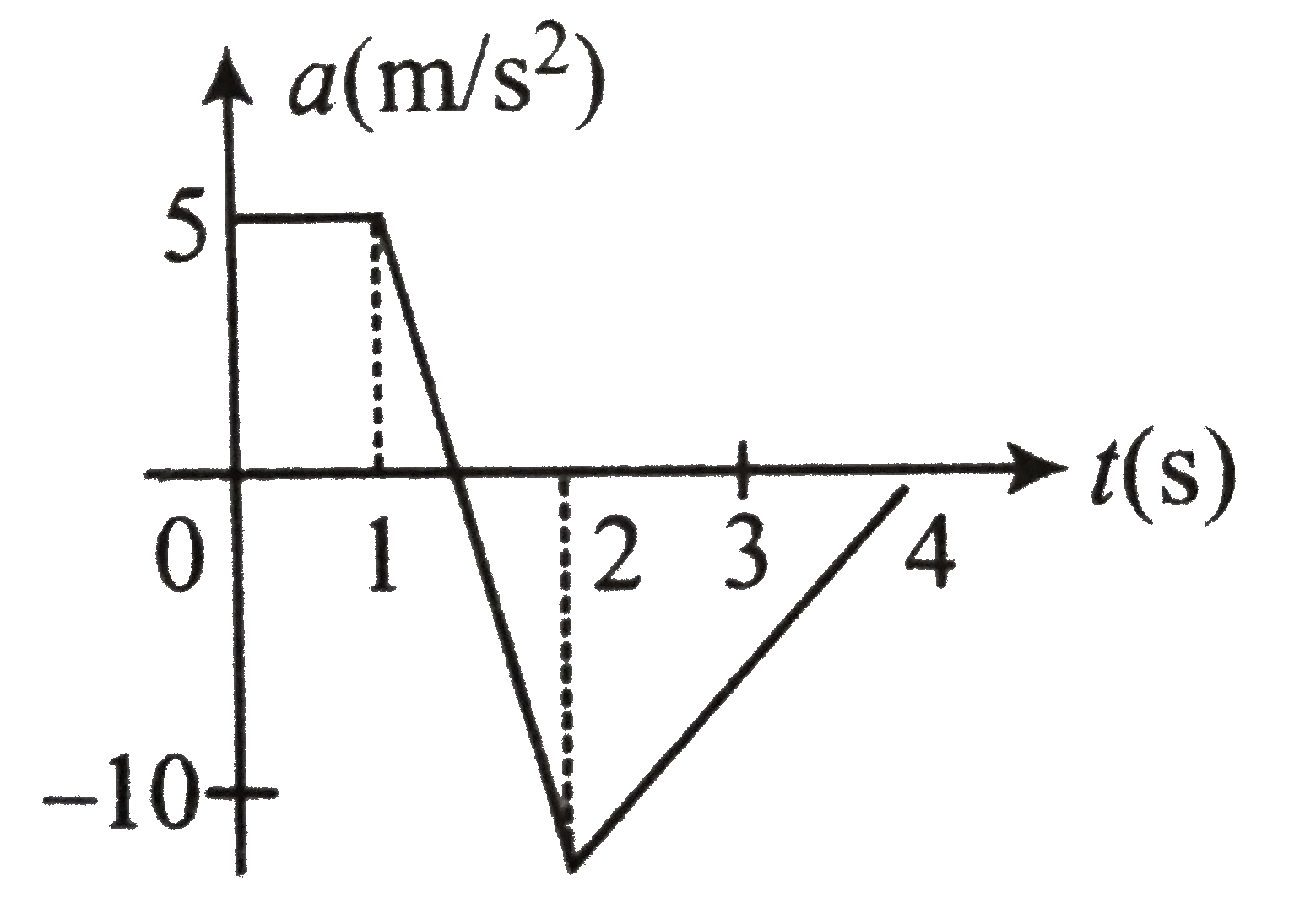A particle is given an initial velocity of 20m/s. acceleration of the particle changes with time and its variation is shown in the following figure. 
The correct Answer is:6
Area under the acceleration - time graph represents the change in velocity . Area above the time axis is taken as positive and below the time axis , it is taken as negative . To acquire initial velocity again , change in velocity must be zero . If we can extend the graph for 6s then we can see that total area becoms zero due to equal amounts of positive and negative areas. Hence particle acquires back its initial velocity at t = 6s.
Answer is 6 .
Topper's Solved these Questions
- MOTION IN A STRAIGHT LINE BOOK - MODERN PUBLICATIONCHAPTER - MOTION IN A STRAIGHT LINE EXERCISE - CHAPTER PRACTICE TEST
16 Videos
- MOTION IN A STRAIGHT LINE BOOK - MODERN PUBLICATIONCHAPTER - MOTION IN A STRAIGHT LINE EXERCISE - COMPETITION FILE (MATRIX MATCH TYPE QUESTIONS )
1 Videos
- MOTION IN A PLANE BOOK - MODERN PUBLICATIONCHAPTER - MOTION IN A PLANE EXERCISE - Chapter Practice Test
15 Videos
- OSCILLATIONS BOOK - MODERN PUBLICATIONCHAPTER - OSCILLATIONS EXERCISE - Practice Test (For Board Examination)
12 Videos
Similar Questions
A particle moves in straight line. Acceleration of particle changes with velocity as showns in graph:

View SolutionA particle moves in straight line. Acceleration of particle changes with velocity as showns in graph:

View SolutionA particle is given an initial velocity of →u=(3ˆi+4ˆj)m/s. Acceleration of the particle is →a=(3t2+2tˆj)m/s2. Find the velocity of particle at t=2s.
View SolutionA particle moves vertically with an upwards initial speed v0=10.5ms−1. If its acceleration varies with time as shown in a-t graph in figure, find the velocity of the particles at t = 4s.

View SolutionA particle moves vertically with an upwards initial speed v0=10.5ms−1. If its acceleration varies with time as shown in a-t graph in figure, find the velocity of the particles at t = 4s.

View SolutionA particle is moving with an initial velocity of 2m/s and covers a distance of 20m in 5s. Find (a) acceleration of particle (b) time taken by the particle to attain a velocity of 10m/s.
View SolutionThe acceleration - time graph of a particle is as shown in figure Initial velocity of particle is 10m/s Displacement of the particle (in m) at the end of 8 sec is ___ Round off to nearest integer.

View SolutionThe velocity time relation of a particle is given by v =(3t2−2t−1)m/s Calculate the position and acceleration of the particle when velocity of the particle is zero . Given the initial position of the particle is 5m .
View SolutionThe velocity time relation of a particle is given by v =(3t2−2t−1)m/s Calculate the position and acceleration of the particle when velocity of the particle is zero . Given the initial position of the particle is 5m .
View SolutionA particle moves along a straight line.The acceleration of the particle as function of time is given by a=6t−12 .Initial velocity of particle is 9ms .Find distance (in meters) travelled by particle in 4 seconds.
View Solution
